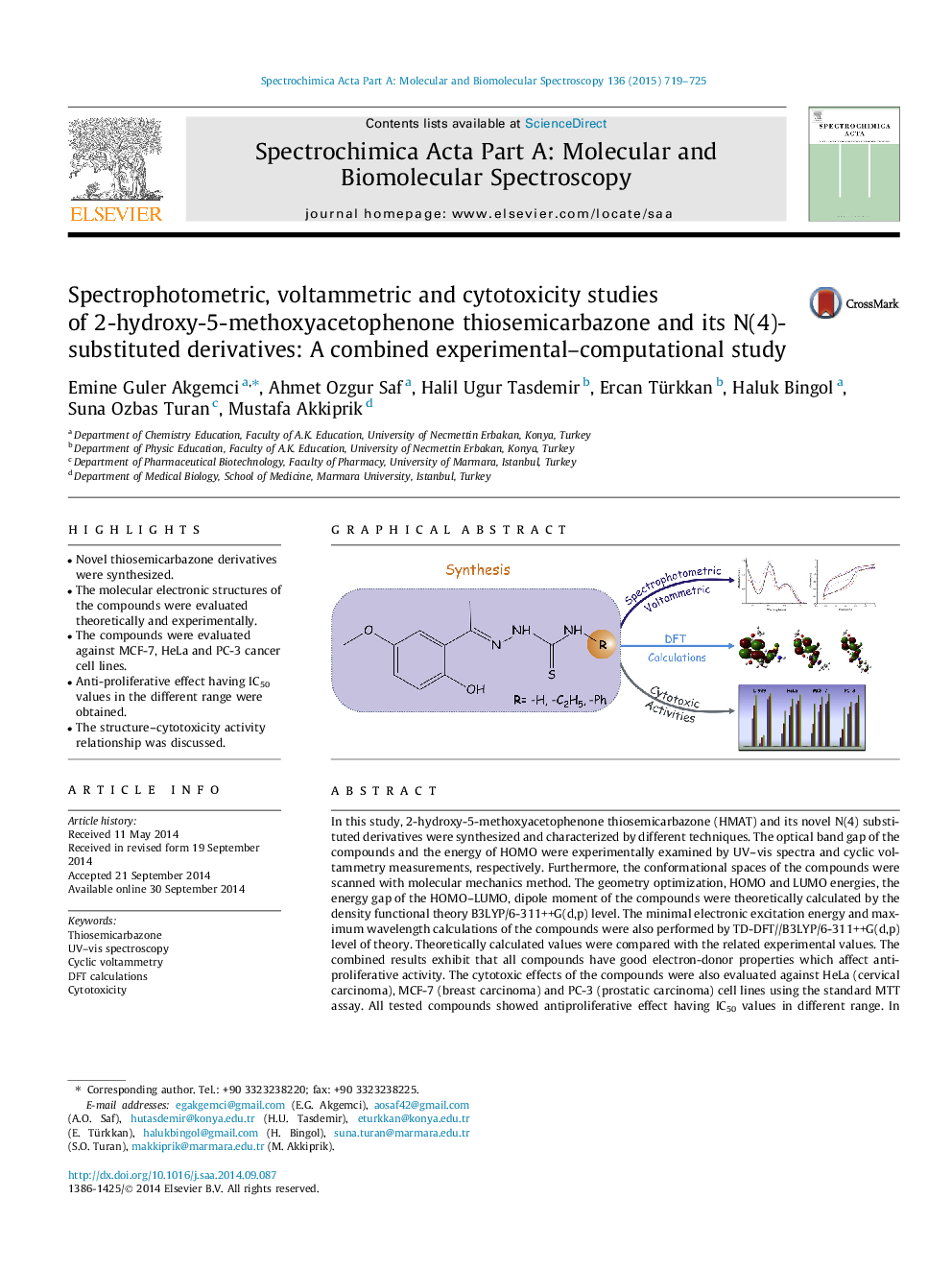| Article ID | Journal | Published Year | Pages | File Type |
|---|---|---|---|---|
| 1229487 | Spectrochimica Acta Part A: Molecular and Biomolecular Spectroscopy | 2015 | 7 Pages |
•Novel thiosemicarbazone derivatives were synthesized.•The molecular electronic structures of the compounds were evaluated theoretically and experimentally.•The compounds were evaluated against MCF-7, HeLa and PC-3 cancer cell lines.•Anti-proliferative effect having IC50 values in the different range were obtained.•The structure–cytotoxicity activity relationship was discussed.
In this study, 2-hydroxy-5-methoxyacetophenone thiosemicarbazone (HMAT) and its novel N(4) substituted derivatives were synthesized and characterized by different techniques. The optical band gap of the compounds and the energy of HOMO were experimentally examined by UV–vis spectra and cyclic voltammetry measurements, respectively. Furthermore, the conformational spaces of the compounds were scanned with molecular mechanics method. The geometry optimization, HOMO and LUMO energies, the energy gap of the HOMO–LUMO, dipole moment of the compounds were theoretically calculated by the density functional theory B3LYP/6-311++G(d,p) level. The minimal electronic excitation energy and maximum wavelength calculations of the compounds were also performed by TD-DFT//B3LYP/6-311++G(d,p) level of theory. Theoretically calculated values were compared with the related experimental values. The combined results exhibit that all compounds have good electron-donor properties which affect anti-proliferative activity. The cytotoxic effects of the compounds were also evaluated against HeLa (cervical carcinoma), MCF-7 (breast carcinoma) and PC-3 (prostatic carcinoma) cell lines using the standard MTT assay. All tested compounds showed antiproliferative effect having IC50 values in different range. In comparison with that of HMAT, it was obtained that while ethyl group on 4(N)-substituted position decreased in potent anti-proliferative effect, the phenyl group on the position increased in anti-proliferative effect for the tested cancer cell line. Considering the molecular energy parameters, the cytotoxicity activities of the compounds were discussed.
Graphical abstractFigure optionsDownload full-size imageDownload as PowerPoint slide
